The macroeconomic trend drives the demand for MEMS and sensors to go higher. Reshaping the future macroeconomic trend is affecting the world and will bring us more in-depth social interaction, a healthier lifestyle, and safer/lower pollution transportation. These big trends will depend on the ever-increasing demand for semiconductor devices in our daily lives. Yole's summary lists nine trends that affect our present and future:
(1) Smart cars (electrification, driverless, intelligent networked vehicles, etc.);
(2) Mobile phones (novelty, improved social experience, augmented reality experience, etc.);
(3) 5G with increased bandwidth;
(4) Ultra-large-scale data centers to handle the growing mass of Internet data;
(5) AR/VR (Augmented Reality/Virtual Reality) brings an immersive experience;
(6) AI/ML (artificial intelligence/machine learning) brings more intelligent human-computer interaction;
(7) Smart homes with more intelligent voice processing, self-driving cars, etc.;
(8) Smart medical (healthier life);
(9) Industry 4.0/Smart Factory (an interconnected factory that uses various sensors to increase production efficiency).
These major trends will bring huge market opportunities for electronic products, especially MEMS and sensors. We estimate that the market for MEMS, sensors, and actuators affected by the macroeconomic situation will grow to $82 billion by 2023.
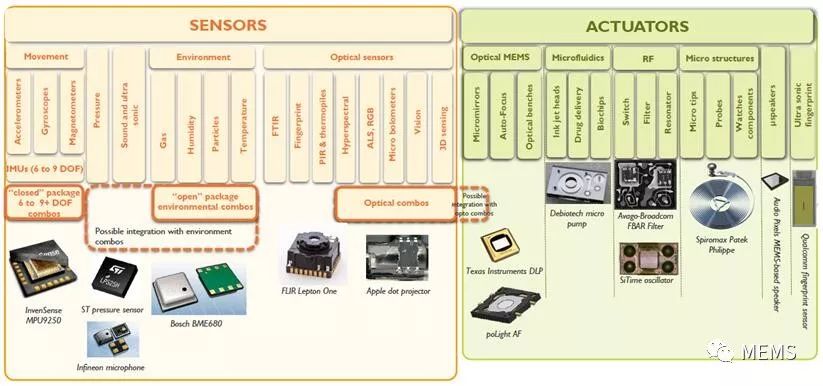
MEMS, Sensors and Actuators Classification and Integration Application Take the mobile phone industry trend as an example. The market drivers include: The advent of 5G with improved bandwidth, continuously improved display technology (higher resolution, better video quality, and enhanced Contrast/brightness, etc., new design, augmented reality, smaller size and more sensing capabilities. These major trends will drive the rapid development of MEMS and sensors. On the smartphone side, a large number of new sensors will emerge: inertial sensors, 3D optical sensors, IR (infrared) sensors, environmental sensors, fingerprint recognition sensors, spectral sensors, and optical MEMS (such as autofocus and/or microprojection). In addition, in order to reduce the device size, the application of wafer-level packaging (fan-out type) will further increase.
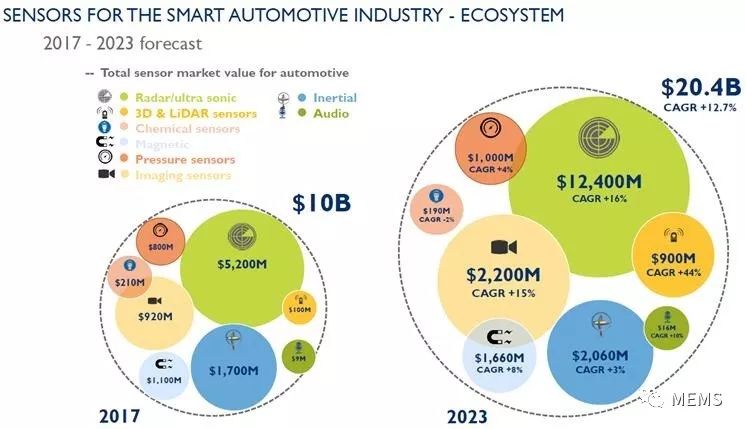
2017~2023 Smart Car Industry Sensor Market Forecasting According to the consulting firm of Maxims, the demand for RF filters will increase further when 5G really arrives, and the fastest growth rate for MEMS will be RF MEMS (BAW Filtering). Device). In addition to MEMS and sensors, 5G operating frequencies also require new materials such as GaN-on-SiC (silicon nitride on silicon carbide), GaN-on-Si (silicon nitride on silicon), and SiGe (silicon on silicon). Noise amplifier) ​​and GaAs (GaAs, used in power amplifiers).
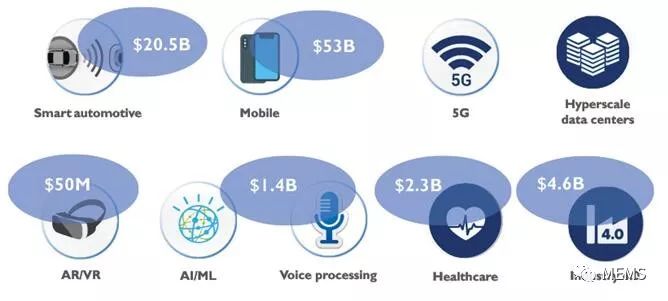
The impact of the electronics industry trend on the market size of sensors and actuators in 2023
RF MEMS is igniting the global MEMS market Yole predicts that the MEMS market scale will achieve a growth rate of 17.5%, and shipments will achieve a growth rate of 26.7%, among which, the consumer market will occupy the largest market share (the market size accounts for more than 50% ). The good news is that almost all MEMS devices will drive this round of growth.
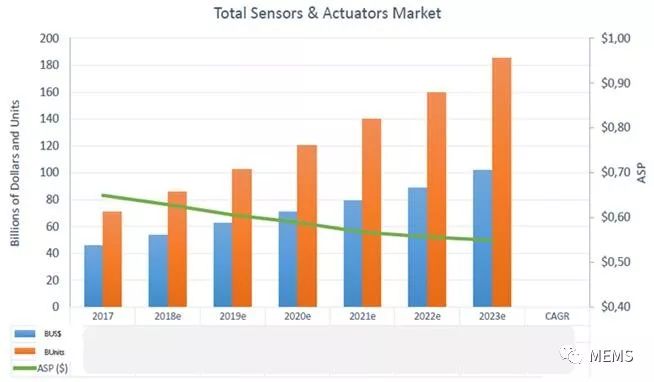
The global market for sensors and actuators in 2017~2023 predicts that the inkjet print head market will continue to grow, with the consumer market accounting for more than 70% of the inkjet print head market demand. The market first showed signs of market recovery in the first half of 2017 and confirmed the recovery trend in the second half of 2017. Also, the disposable and fixed print head markets are recovering. Most consumer market vendors have shown significant growth: For example, HP (HP) has seen a 2% increase in consumer printer revenue since 2016; Canon (Canon) has confirmed the business of the inkjet printer business. Income growth, of which the demand in the Asian market performed strongly. Numerous pressure sensor applications have contributed to the expansion of the market. Interestingly, although pressure sensors are one of the most "old" MEMS technologies, they still maintain market growth. In the automotive field, where pressure sensors are the most used, MEMS pressure sensors have many advantages, such as the fear of harmful exhaust gases and harsh driving environments, higher precision, and the development of smart tires, and provide more information about the status of tires (especially for Future self-driving cars). For the consumer market, mobile devices and smartphones still account for 90% of market revenue, and reducing the cost is more important than the reduction in size because its size is already small. Although in the foreseeable future, there will be no strong killer applications, but new applications are emerging: smart homes, electronic cigarettes, drones, and wearable devices.
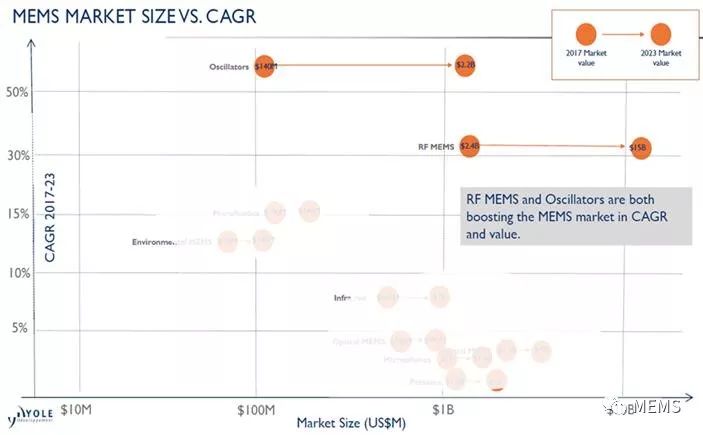
The main MEMS device market size vs. compound annual growth rate (sample blurring) MEMS microphones have long been a concern and are one of the highest annual compound annual growth rates for all MEMS products in the past five years. In 2008, the market size of MEMS microphones was approximately US$105 million. In 2012, it increased to US$402 million. In 2016, it reached a milestone of US$1 billion. Now, the annual shipment of MEMS microphones has reached 4.5 billion. The consumer market is still the largest segment of inertial MEMS devices, but price pressure is huge and competition is fierce. In the smart phone and tablet market, competing with small-size, low-power and multi-functional combined sensors is still difficult for discrete accelerometers. Discrete accelerometers are mainly used in low-end smartphones and can also be used in conjunction with combination sensors to manage certain functions (eg UI rotation/smooth operation). Self-driving cars are new applications for gyroscope dead reckoning. Although high-performance inertial devices are needed in this area, MEMS technology still has a share. LiDAR (Lidar) sensors for autopilot applications will also be exciting new applications for MEMS micromirrors. Uncooled infrared imaging sensors are also growing steadily on a step-by-step basis. This is mainly due to the continuous decline in prices driven by new technologies such as wafer-level packaging and silicon lenses, as well as increasing customer acceptance over the past few years. For microfluidic devices, many existing developments are driving the development and application of silicon technology. For example, in early 2018, Illumina released a new DNA sequencer, the iSeq 100. Unlike Illumina's conventional technology, this sequencer uses a semiconductor (CMOS) chip. Due to the complexity of transition to 5G and more frequency bands, the demand for RF filters in 4G/5G continues to grow, making RF MEMS (BAW filter) the fastest growing MEMS market segment. The market size in this area is expected to grow rapidly from 2.3 billion U.S. dollars in 2017 to 15 billion U.S. dollars in 2023. Excluding RF devices, the compound annual growth rate of the MEMS market during the period from 2018 to 2023 is expected to be 9%, and in the RF market, this figure will reach 17.5%. There are many new MEMS devices on the market that are evolving: piezoelectric MEMS (autofocus, inkjet printheads, etc.), FTIR (Fourier transform infrared devices), portable electronic noses, ultrasonic MEMS for medical imaging and industrial applications, and microswitches. Wait. The development of these MEMS devices will help boost the growth of the MEMS market.
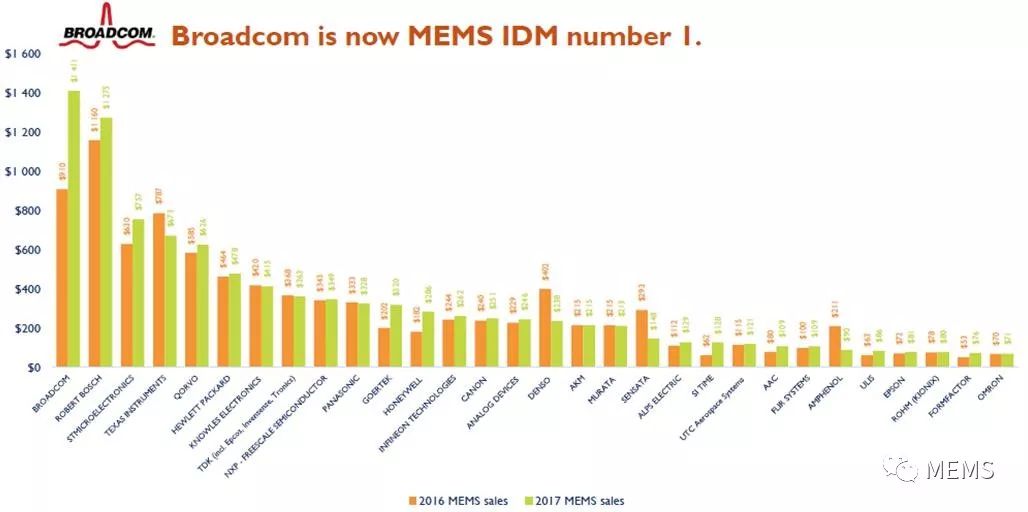
In 2017, the top 30 MEMS manufacturers in 2017, the biggest surprise in the market (and certainly not entirely unexpected) was that Broadcom became the first place in the MEMS field. As the number of filters/handsets continues to grow and the value of front-end modules continues to increase, the demand for RF devices will increase, and RF vendors will likely continue to dominate the 2018 MEMS rankings. Most manufacturers have achieved positive growth during 2016~2017. Although Broadcom's outbreaks have shocked established companies in the MEMS field, such as Bosch, STMicroelectronics, Texas Instruments, and HP, their market performance is still good. For example, the Bosch market Revenue increased by about 100 million U.S. dollars.
SiTime is the most spectacular (more than 100%). Other MEMS manufacturers that have achieved significant growth include: FormFactor, which benefits from its robust semiconductor business; ULIS, uncooled infrared sensor business has grown year by year, and has continued to expand into multiple applications (consumer temperature measurement, fire protection, night vision, smart phones, Drones and military applications).
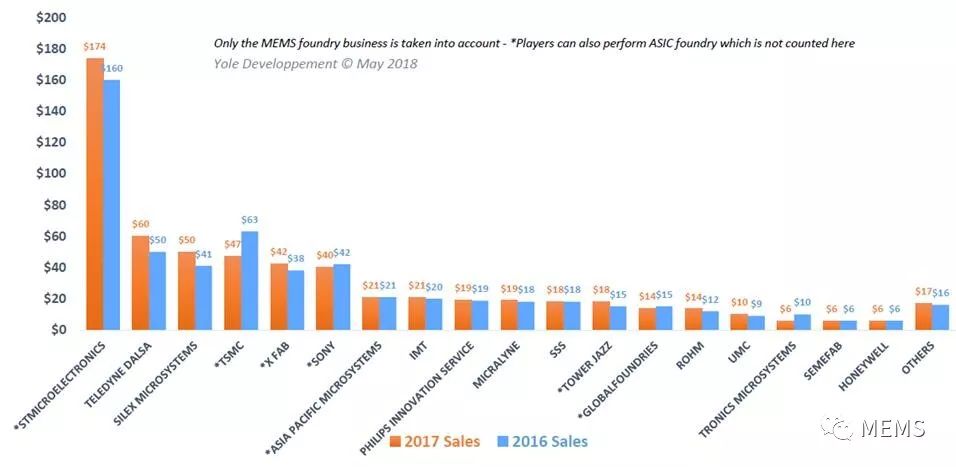
2017 MEMS Foundry Revenue Ranking
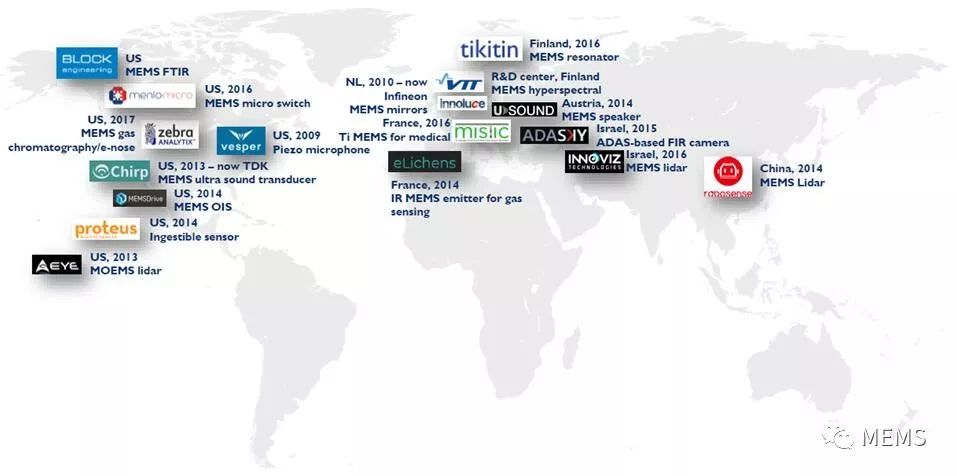
World-renowned MEMS startups
In 2016, the world’s top 30 MEMS manufacturers generated revenue of US$9.24 billion. By 2017, this figure has grown to $9.88 billion.
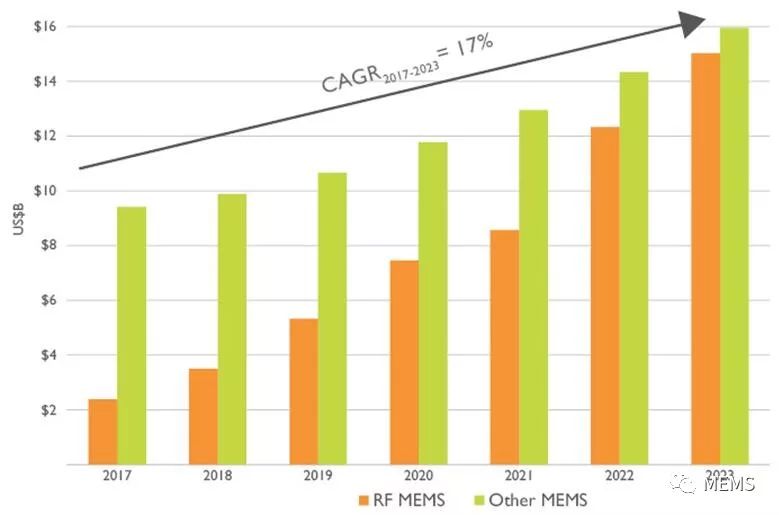
2017~2023 MEMS Market Forecast: RF Devices vs. Other MEMS Devices From detecting environmental awareness, MEMS will transform from a sensing technology to a full-scale sensing capability. MEMS and sensors were originally developed primarily for "basic" physical sensing. , such as vibration and pressure. Then, accelerometers and gyroscopes were developed, which required a huge R&D investment in design. With more R&D investment, MEMS have evolved from physical sensors to light management (such as MEMS micromirrors) to infrared sensing (such as microbolometers). This creates the possibility for sensors to transcend human senses for the first time. From the physical/light technical point of view, the development of MEMS has also been driven by acoustic sensors such as MEMS microphones. Today, the development of MEMS and sensors aims to surpass the limits of human perception and provide ultrasonic, hyperspectral and RF sensing capabilities. Even we can imagine the next generation of sensor for emotional/psychological resonance perception. Thanks to the three development stages of the sensors, these will finally be realized:
1. In the early stages of MEMS, they were mainly detectors and they could hardly provide good accuracy;
2. Subsequently, MEMS has been developed to have measurement capabilities, improved accuracy, and added additional measurable parameters (infrared, sonic, ultrasonic, etc.);
3. We believe that the next step will be "awareness of global awareness." This means that sensors and MEMS will be able to provide global environment map building capabilities (such as LiDAR's 3D environment perception, in addition, using sound waves, hyperspectral waves, etc.). Multi-sensor fusion and artificial intelligence will be the key building blocks to achieve this milestone.
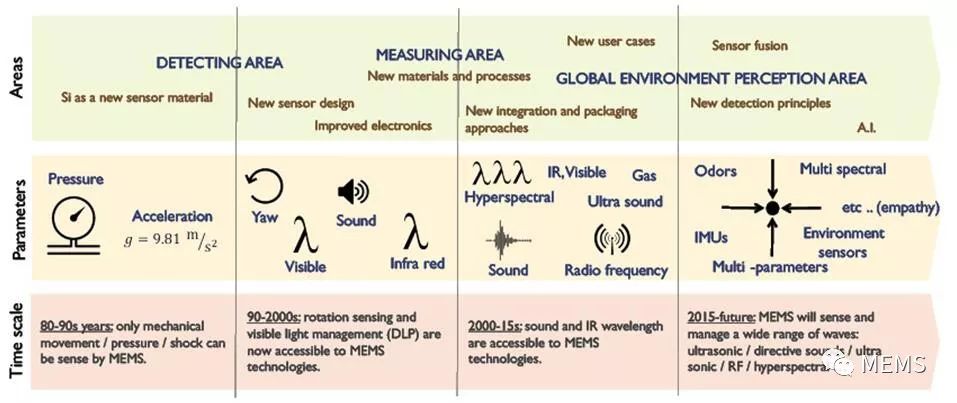
From Detection to Global Awareness Awareness of some of the companies covered in this report: AAC, AKM, ALPS Electric, Amphenol, ams, Analog Devices, Apple, Asia Pacific Microsystems, Boehringer, Ingelheim microPARTS, Bosch, Broadcom, Canon, Colibrys, Cirrus Logic, DENSO, DRS, EPCOS, Epson, First Sensor Technology, FLIR Systems, FormFactor, Fujifilm Dimatix, GLOBALFOUNDRIES, Goertek, Hewlett Packard, Hitachi Automotive, Honeywell, IMT, Infineon Technologies, Kistler, Knowles Electronics, Kulite, mCube, Meggitt Sensing Systems, Melexis, Memjet, MEMSCAP, MEMSIC, Micralyne, MicroVision, Murata, NXP Semiconductors, Omron, ON Semiconductor, Panasonic, Qorvo, Qualcomm, Raytheon, ROHM, Samsung, SCD, SDI, Semefab, Sensata, Sensirion, Sensonor, SiTime, Silex Microsystems , Silicon Sensing Systems, SMIC, Sony, STMicroelectronics, TDK, Teledyne DALSA, Texas, Instruments, Tower Jazz, TSMC, ULIS, UMC, UTC Aerospace System, X-Fab, Yamaha...
Ningbo Xingchuangzhi Electric Appliance Co.,Ltd. , https://www.xingchuangzhi.com